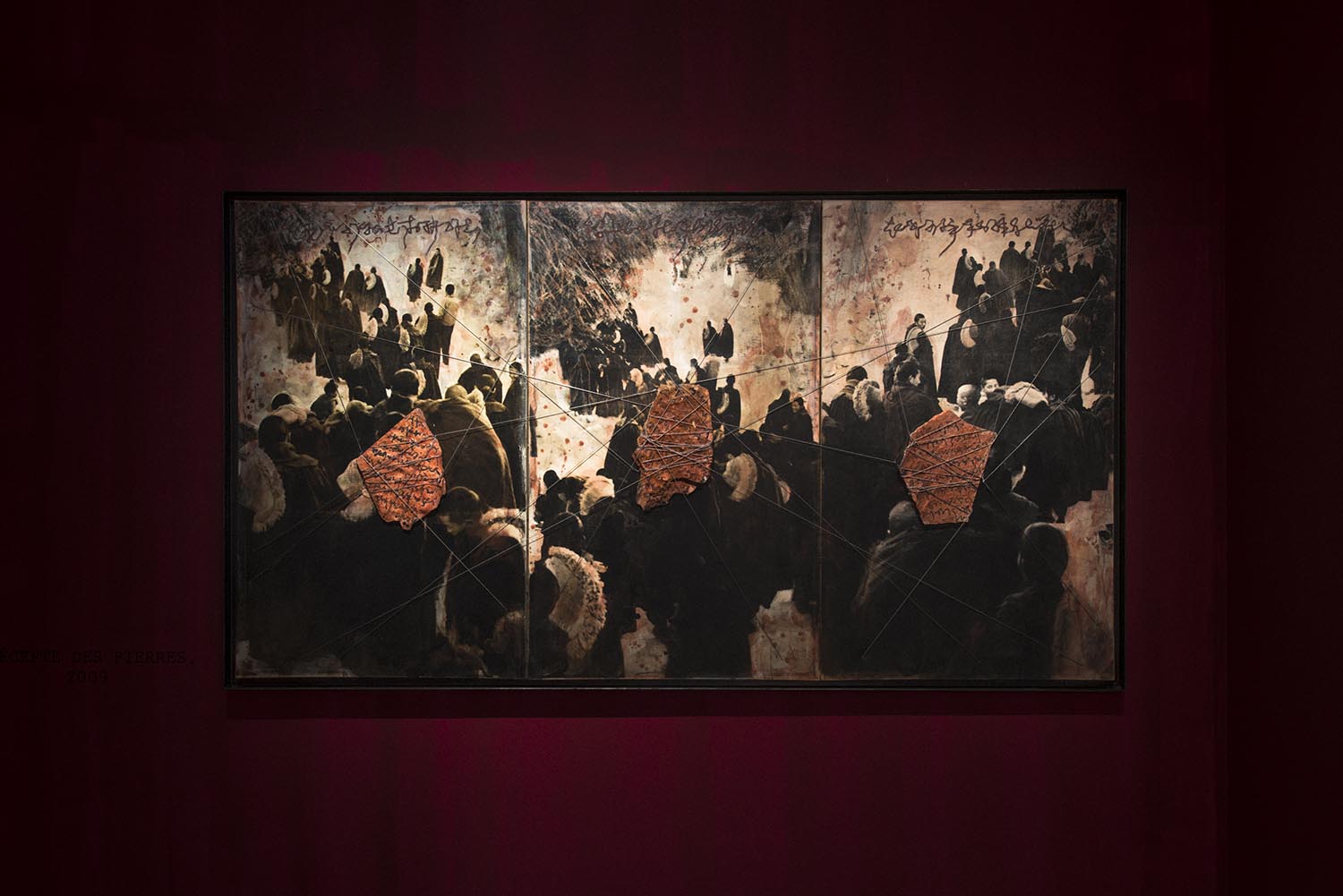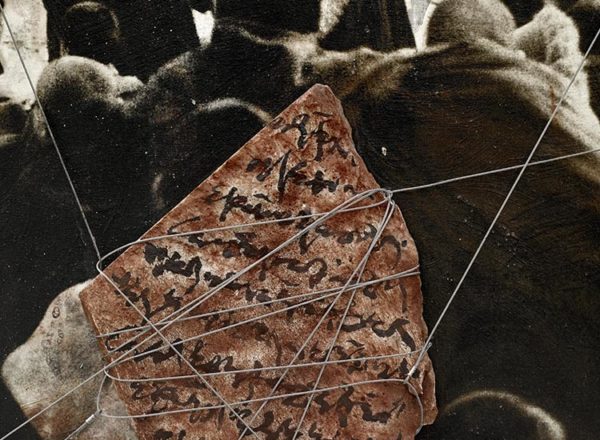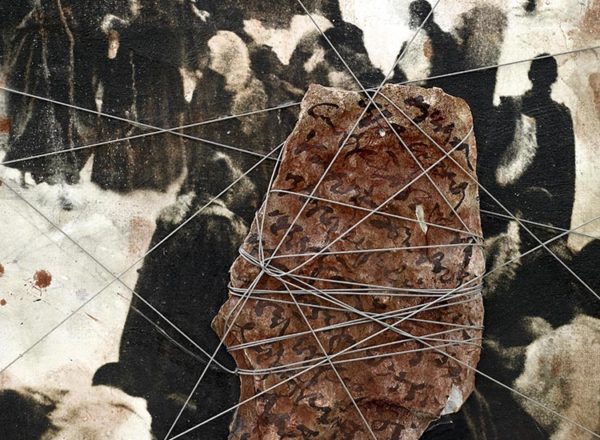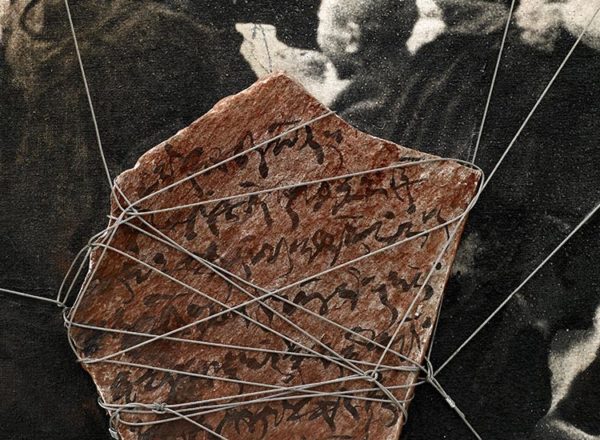Silver bromide emulsion print, paint emulsion, ink, pastel on canvas, stone with steel wire.
Although Gao Bo’s work is infused with spirituality, he rarely tackles the question of religion head-on. Buddhism, he believes, is a way of relating to the world that involves perpetual questioning—the reverse of dogma. It is a form of spirituality more than a religion, a tool of understanding more than an instrument of alienation. This is the meaning of the Precept of Stones, a triptych showing a group of pilgrims photographed three times almost simultaneously, with each section of the work covered by a sacred inscribed Tibetan “mani” stone caught up in a tangle of wires superimposed on their bodies. Gao Bo questions the weight of religion that becomes a burden, a physical and material hindrance to spiritual elevation. Chained to these stones as they might be to a sterile ritual or ceremony, these men seem to be irremediably rooted to the spot. Refusing to be imprisoned within a particular aesthetic of the sacred, Gao Bo frees himself from it in order to transcend it, suggesting that creation is the superior state of being in the world.



